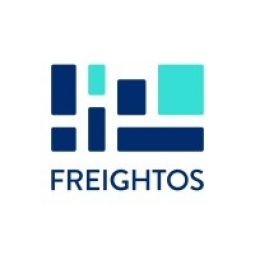Technology Category
- Sensors - Air Pollution Sensors
- Sensors - Environmental Sensors
Applicable Industries
- Marine & Shipping
- Transportation
Applicable Functions
- Logistics & Transportation
- Procurement
Use Cases
- Demand Planning & Forecasting
- Time Sensitive Networking
About The Customer
The customers in this case study are primarily importers and exporters who rely on global logistics for their business operations. These customers have been significantly impacted by the disruptions caused by the COVID-19 pandemic, including inflationary pressures, trade pattern shifts, and elevated logistics costs. They have had to navigate a volatile market, with ocean freight prices and volumes of imported containers to the US seeing significant fluctuations. Furthermore, they have had to deal with the impacts of labor disputes and contract negotiations among port worker unions. Despite these challenges, these customers continue to seek solutions to ensure the efficiency and effectiveness of their operations.
The Challenge
The global logistics industry has faced significant disruption since the onset of the COVID-19 pandemic, with inflationary pressures, trade pattern shifts, and elevated logistics costs. Ocean freight prices, particularly China-West Coast US rates, have seen a downward trend, reaching pre-pandemic levels. The volumes of imported containers to the US saw a decline through November 2022, and congestion at key ports like LA/Long Beach significantly eased. However, the rates for shipping a 40-ft container from Asia to the US West Coast have dropped by over 80% since the end of April 2022, and prices to the East Coast have fallen by almost two-thirds. This decline in logistics costs is primarily due to a reduction in consumer spending, which has impacted sales among many importers over the last two years. Furthermore, labor disputes and contract negotiations among port worker unions have added to the complexities of the situation.
The Solution
To navigate the current freight market, importers and exporters are advised to compare quotes and modes to ensure cost efficiency and service effectiveness. They are also encouraged to buffer their freight budget and transit time for changes, explore warehousing options to mitigate the effects of lowered demand and business restrictions in the US, and pay attention to the profitability of their goods. Freight forwarders are advised to communicate regularly with their clients, book orders as soon as possible, and ensure they have the manpower to accept goods upon arrival. In the air cargo sector, optimism exists within the industry, as upcoming electronics product launches are expected to drive a potential peak season rebound in the coming months. Meanwhile, ocean rates from Asia are expected to continue their upward trajectory, rebounding from October lows as carriers adjust capacity to align with reduced volumes in Q4.
Operational Impact
Quantitative Benefit

Case Study missing?
Start adding your own!
Register with your work email and create a new case study profile for your business.
Related Case Studies.

Case Study
Airport SCADA Systems Improve Service Levels
Modern airports are one of the busiest environments on Earth and rely on process automation equipment to ensure service operators achieve their KPIs. Increasingly airport SCADA systems are being used to control all aspects of the operation and associated facilities. This is because unplanned system downtime can cost dearly, both in terms of reduced revenues and the associated loss of customer satisfaction due to inevitable travel inconvenience and disruption.

Case Study
IoT-based Fleet Intelligence Innovation
Speed to market is precious for DRVR, a rapidly growing start-up company. With a business model dependent on reliable mobile data, managers were spending their lives trying to negotiate data roaming deals with mobile network operators in different countries. And, even then, service quality was a constant concern.

Case Study
Digitize Railway with Deutsche Bahn
To reduce maintenance costs and delay-causing failures for Deutsche Bahn. They need manual measurements by a position measurement system based on custom-made MEMS sensor clusters, which allow autonomous and continuous monitoring with wireless data transmission and long battery. They were looking for data pre-processing solution in the sensor and machine learning algorithms in the cloud so as to detect critical wear.

Case Study
Cold Chain Transportation and Refrigerated Fleet Management System
1) Create a digital connected transportation solution to retrofit cold chain trailers with real-time tracking and controls. 2) Prevent multi-million dollar losses due to theft or spoilage. 3) Deliver a digital chain-of-custody solution for door to door load monitoring and security. 4) Provide a trusted multi-fleet solution in a single application with granular data and access controls.

Case Study
Vehicle Fleet Analytics
Organizations frequently implement a maintenance strategy for their fleets of vehicles using a combination of time and usage based maintenance schedules. While effective as a whole, time and usage based schedules do not take into account driving patterns, environmental factors, and sensors currently deployed within the vehicle measuring crank voltage, ignition voltage, and acceleration, all of which have a significant influence on the overall health of the vehicle.In a typical fleet, a large percentage of road calls are related to electrical failure, with battery failure being a common cause. Battery failures result in unmet service agreement levels and costly re-adjustment of scheduled to provide replacement vehicles. To reduce the impact of unplanned maintenance, the transportation logistics company was interested in a trial of C3 Vehicle Fleet Analytics.

Case Study
3M Gains Real-Time Insight with Cloud Solution
The company has a long track record of innovative technology solutions. For example, 3M helps its customers optimize parking operations by automating fee collection and other processes. To improve support for this rapidly expanding segment, 3M needed to automate its own data collection and reporting. The company had recently purchased the assets of parking, tolling, and automatic license plate reader businesses, and required better insight into these acquisitions. Chad Reed, Global Business Manager for 3M Parking Systems, says, “With thousands of installations across the world, we couldn’t keep track of our software and hardware deployments, which made it difficult to understand our market penetration.” 3M wanted a tracking application that sales staff could use to get real-time information about the type and location of 3M products in parking lots and garages. So that it could be used on-site with potential customers, the solution would have to provide access to data anytime, anywhere, and from an array of mobile devices. Jason Fox, Mobile Application Architect at 3M, upped the ante by volunteering to deliver the new app in one weekend. For Fox and his team, these requirements meant turning to the cloud instead of an on-premises datacenter. “My first thought was to go directly to the cloud because we needed to provide access not only to our salespeople, but to resellers who didn’t have access to our internal network,” says Fox. “The cloud just seemed like a logical choice.”







